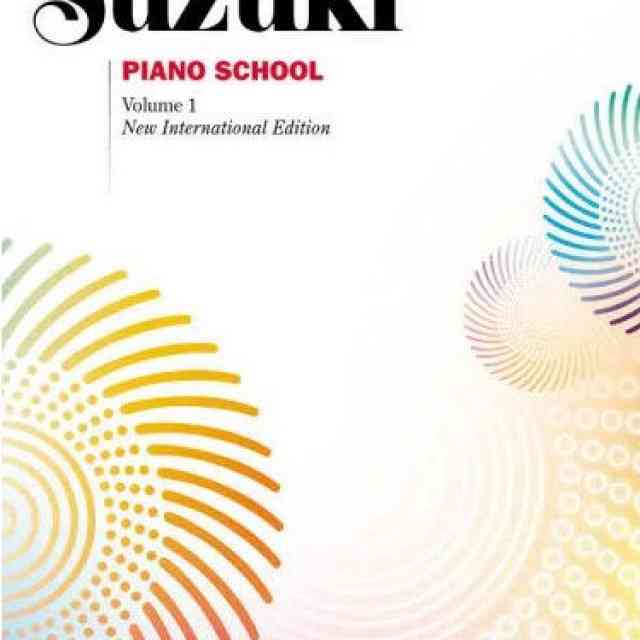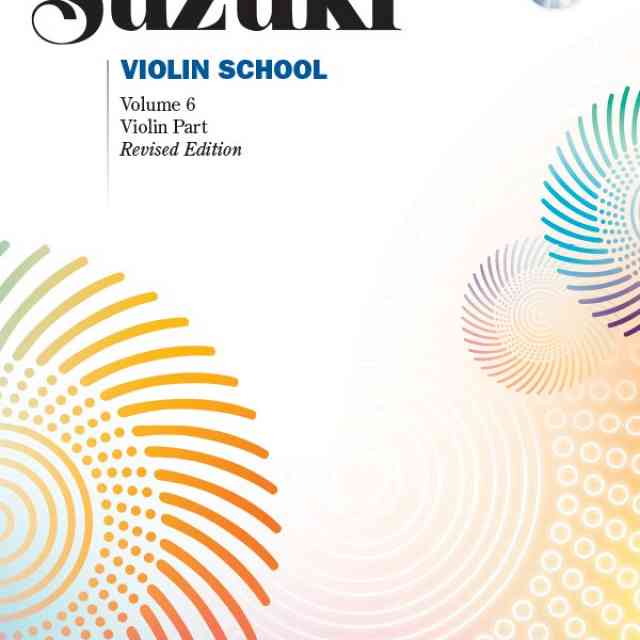Refining teaching to include repertoire from under-represented communities brings a broader vision to the Suzuki community and helps prepare our students for a global society. We can broaden each student’s musical knowledge and reinforce concepts in any Suzuki book by using supplemental repertoire from composers of diverse backgrounds. While there are many different types of groups to explore, this article will focus on the three largest groups in the Americas: LatinX, African American, and women. After reading this article, you will be able to identify opportunities for multicultural music and evaluate specific suggestions for supplementary repertoire.
Opportunities abound to introduce Suzuki piano students to diverse music. Of course, the teacher is responsible for evaluating and identifying music at the appropriate pedagogical level so that the student is optimally challenged but not frustrated. Teachers must recognize their role as both pedagogical guides and multicultural curators and carefully balance both considerations. All students should be offered multicultural music, and the teacher can also offer individual students and families an opportunity to share their own heritage. The teacher then can allow the student to play pieces from his or her own culture, or perhaps a culture the student would like to explore, to better experience and understand the world through music. Another option for the entire studio is to have a special recital focusing on a theme, ethnicity, or holiday. Finally, agency is key when selecting supplementary repertoire. I recommend giving students several choices of pieces, carefully curated to ability and interest, and be allowed to choose. Students with agency are more invested in learning.
My Experiences Teaching Multi-Cultural Repertoire
Students in my studio have been enthusiastic and successful when playing new multi-cultural repertoire. As Suzuki teachers, we are accustomed to evaluating new concepts and potential challenges, as well as developing plans for student learning. Working on these supplemental pieces has enriched my students in rhythmic, harmonic, and technical concepts in addition to expanding their musical world view.
One key example is the complexity of rhythm in LatinX music. The teacher must anticipate any new rhythmic pattern and prepare in advance several potential teaching techniques. LatinX music may have Hispanic dance rhythms and harmonic complexity. Pianists in the early Suzuki books may not have proficient reading skills and should not be expected to learn new ideas by reading alone. Teachers may assign listening or may preview new rhythmic concepts in the lesson. In my experience, a Book Four student took longer than expected to master LatinX rhythms, harmonies, and minor technical challenges in pieces by Octavio Pinto. But, they were successful after playing together with me, clapping the rhythms, counting out loud, and using the metronome in lessons. After mastery, the student loved the pieces and played them proficiently and enthusiastically in recitals and competitions.
When teaching “Ticklin’ Toes,” an African American piece by female composer Florence Price, a Book Six student quickly became comfortable with harmonies that differed from the core repertoire. However, she found syncopation challenging. We previewed syncopation because the student had not yet reached Granados’s “Andaluza.” I gave the student a choice of three pedagogically appropriate pieces and she chose “Ticklin’ Toes” because she loved the whimsical nature of the music. Because she was given a choice, she was highly invested in learning the piece. She played it successfully for our studio recital and scored highly when playing it for a competition.
Repertoire Suggestions
Book One Level: “The Unsung” by Dr. Leah Claiborne
This work can be found in Piano Music of Black Composers Level 1. As both an African American and female composer, Dr. Claiborne’s work reinforces a clear balance between the hands, left-hand broken chords, and right-hand cantabile melody. Students are prepared for this piece by the compound meter in Musette and the cantabile style in Au Clair de la Lune. It is beneficial because “The Unsung” does not use a typical closing cadence and has an overall varied tonality, both of which are new to Book One students.
Book Two Level: “Tender Thought” from Ten Short Essays by Ulysses Kay
“Tender Thought” appears in Music of Africa and the African Diaspora Level 1 (published by Oxford). It is approximately Henle Level One, which is equal to pieces in the Anna-Magdalena Bach Notebook such as the Minuet in G minor, Anh. 115. Written by an African American composer, “Tender Thought” is lyrical and requires the student to voice out the inner (middle) line. It also necessitates that the performer articulate the meter and tempo using the bass line. Students are prepared for this piece by Bela Bartok’s “Hungarian Folk Song” from For Children, Sz. 42, particularly through the lyrical harmony and tied notes. The new skills students use while playing this include pedal at the end (optional for small students) as well as exploration of non-diatonic harmony. Some of these skills are similar to Robert Schumann’s “Melody” from Album for the Young, op. 68, no. 1, although Kay’s style is unique in its use of non-diatonic harmony for Book Two students.
Book Three Level: “The Phantom” from Cuentos de la Juventud, op. 1, no. 8, by Enrique Granados
“The Phantom” can be found in Masters of Spanish Piano Music and comes from the set Cuentos de la Juventud (Stories of the Young). It can be considered part of Henle Level Two, as is J.S. Bach’s Prelude in C major, BWV 846 from the Well-Tempered Clavier Book 1. Written by a LatinX composer from Spain, it contains careful accents, rhythm, and articulation. It requires clear dynamic changes, reinforces scalar technique, and has unison playing. Students are prepared for this piece by the articulation and varied dynamics in Kuhlau’s Sonatina op. 55 no. 1,II: Vivace. Unique to “The Phantom” are Spanish harmonies, rhythms, and frequent unison passages not otherwise found in Suzuki Piano Book Three. Students find this piece mysterious and exciting.
Book Four Level: “Danza de Amor” from Encantos Espanoles by Eugénie Rocherolle
Written by American female composer, pianist, lyricist, and teacher, Eugénie Rocherolle’s selection may be found in Encantos Espanoles (Spanish Delights): Six Pieces for Piano Solo. This particular set is unique because it is in a Latin style by a female composer, although she is not of Latin descent. It has a very lyrical right hand, requires syncopation between the hands, and needs an even speed. At Henle Level Three, it is close to Beethoven’s Sonata op. 49, no. 2 in difficulty.
This piece is different from other Book Four repertoire in that it has a Spanish habanera rhythm. Students are prepared for this piece’s lyricism by the style of Burgmuller’s “By The Limpid Stream,” from 25 Progressive Pieces, op. 100, no. 7, and for the varied timing between the hands by J.S. Bach’s “Gigue” from the Partita in B-flat Major, BWV 825. The “Danza de Amor” is a great finale showpiece for students graduating from Suzuki Piano Book Four.
Book Five Level: “Andante con espressione” by Fanny Mendelssohn Hensel
Composed by Fanny Mendelssohn Hensel, this selection is from her set Lyrische Stücke für Klavier and somewhat reminiscent of her brother Felix Mendelssohn’s Lieder ohne Worte (Songs without Words). “Andante con espressione” can be found in the compilation Women Composers in History: 19 Intermediate to Late Intermediate Piano Pieces by 8 Composers. Fanny Mendelssohn’s selection is approximately Henle Level Four, similar to Edward Grieg’s Lyric Pieces, op. 12. As a female composer and sibling of a well-known male composer in his own right, Fanny Mendelssohn’s works are unfortunately not as famous or frequently played than some other composers.
The “Andante con espressione” has a smooth and lyrical right-hand melody and the performer must be fluent in thirds and fourths (see ex. 1). There is also variation between single voice and chordal progression material in the right hand. Students are prepared to play this piece by Robert Schumann’s work “About Foreign Lands and People” from Kinderszenen, op. 15, no. 1 in which they execute voicing the top line and work on fluid and frequent tempo alterations. This piece is new and distinct because it is longer than most of the other works students have played and has an expanding range between the hands from the bass to treble ends of the keyboard.
Book Six Level: “Petite Piece #2” from Trois Petite Pieces Pour Piano by Nadia Boulanger
With modern harmony, “Petite Piece #2” has a lyrical nature and is written in waltz style. Ornaments are a special challenge but students appreciate mastering them. Nadia Boulanger did not shy away from writing works for performers of any age. This particular piece is from the set Trois Petite Pieces Pour Piano and would be considered Henle Level Five. Another set of pieces at this level of difficulty is Robert Schumann’s Fantasiestücke (Fantasy Pieces), op. 12, containing the popular piece “Aufschwung” (Soaring).
Students are prepared for this piece by Felix Mendelssohn’s “Venetian Gondola Song,” op. 30, no. 6. The smooth moving melody is similar to the texture in Boulanger’s piece as well as having a clear accompanying bass line. “Petite Piece #2” is unique in that it uses frequent non-diatonic harmony and is a short character piece. Many other Book Six selections are longer, but the slow and short nature of a character piece may be a welcome change for many students who are accustomed to the full sonatas in Suzuki Book Six. Pianists feel rewarded to experience the beautiful yet pensive sound Boulanger creates in her music without the commitment of a long piece.
Book Seven Level: “Troubled Waters” by Margaret Bonds
This is a beautiful rendition and expansion of “Wade in the Water,” a folk song for the Underground Railroad. African American female composer Margaret Bonds wonderfully portrays the famous spiritual tune and expands it in a virtuosic manner. Performers can find this piece in the compilation book Piano Music of Africa and the African Diaspora: Volume 4. Some of her techniques include using full and large harmonic chords, writing in swing rhythm, as well as using dotted and other complex rhythms.
This piece would be considered a Henle Level Six, similar to the difficulty of Beethoven’s Piano Sonata op. 10 no. 3. Students are prepared for this piece using the last two pieces in Suzuki Book Seven, “Poarga Romaneasca” and “Maruntelul” from Romanian Folk Dances, Sz. 56 by Bela Bartok, two works which are very quick and require adept finger control and balance. “Troubled Waters” has the same requirements and could be an excellent post-graduation piece from Book Seven because of its Lisztian virtuosic approach and theme and variations form. The piece is thrilling for performers and audiences alike.
Where do we go from here?
As a teacher, I use a variety of collections when selecting African American, LatinX, or women’s music. Each selection must be catered to the individual student’s abilities and interests for optimal learning. The above works are just a few examples of potential supplemental works. Ideally, Suzuki piano teachers would have a discussion on adding updated and well-rounded works in either a supplemental book or to an updated version of our current Suzuki books. However, in order to provide our students with the best possible experience in their musical journey, optional supplementary repertoire suggestions between major book revisions are always valuable. I hope that through clear guidance and broadening our musical understanding, we can continue to clarify Dr. Suzuki’s musical vision and goals in our studios.
References
Collections of Music
Chapman Nyaho, William H. 2007. Piano Music of Africa and the African Diaspora Volumes 1-5. New York: Oxford University Press.
Claiborne, Leah. 2023. Expanding the Repertoire: Music of Black Composers—Level 1-2. Milwaukee: Hal Leonard Corp.
Gruenberg, Immanuela. 2023. Piano Music by Women Composers Book 1-2. Milwaukee: Hal Leonard Corp.
Hinson, Maurice (EDT), ed. Masters of Spanish Piano Music: An Alfred Masterwork Edition. Van Nuys, CA: Alfred Publishing, 1990.
Rocherolle, Eugenie. 2014. Encantos Espanoles (Spanish Delights): Six Pieces for Piano Solo. Milwaukee: Hal Leonard Corp.
Smith, Gail. 2013. Women Composers in History: 19 Intermediate to Late Intermediate Piano Pieces by 8 Composers. Milwaukee: Hal Leonard Corp.
Secondary Literature
Abril, Carlos R. 2006. “Music That Represents Culture: Selecting Music with Integrity.” Music Educators Journal 93 (1): 38. https://doi.org/10.2307/3693429.
Brener, Deborah. 2011. “Around the World at the Piano: Becoming Multicultural in Today’s Piano Studio.” American Music Teacher 60 (5): 22–27. https://www.jstor.org/stable/43546371.
Campbell, Patricia Shehan. 2002. “Music Education in a Time of Cultural Transformation.” Music Educators Journal 89 (1): 27–32. https://doi.org/10.2307/3399881.
Gladden, Matthew. 2017. “A Survey of Elementary Piano Repertoire: A Piano Instructor’s Resource.” Dissertation, University of Illinois at Urbana-Champaign.
Worsham, Heidi Astle. 2022. “A Teacher’s Guide to Diverse Piano Repertoire: An Annotated Bibliography of Intermediate Level Repertoire by Historically Underrepresented Composers through Each Historical Period.” Essay, The University of Iowa.








